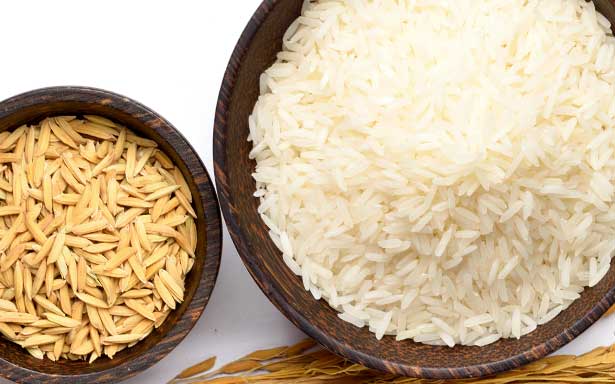What Is Rice It! Lessons From The Oscars

본문
Rice is one of the crucial extremely consumed foods on the planet, particularly in Asia. Parboiled white rice is specifically processed earlier than milling to retain a lot of the nutrients, and enriched rice has iron and B vitamins added to it. Parboiled white rice retains many of the nutrients, and enriched rice has iron and B vitamins added to it. Other merchandise wherein rice is used are breakfast cereals, noodles, and such alcoholic drinks as Japanese sake. Long durations of sunshine are important. What Are Some Brands of Beer That Contain Rice? The next nutrients make brown rice a healthier selection. Despite what version of Jollof rice you want, Shirley’s Jollof Paste can make the perfect Jollof rice. See ‘Does Sake make you fat? Many say you'll be able to see and feel results after a single use. When perusing the grain aisle, it can be overwhelming to see all the rice varieties accessible today.
 Varieties differ significantly in the size, shape, and weight of the panicle and the overall productivity of a given plant. The cultivated rice plant is an annual grass and grows to about 1.2 metres (four toes) in top. The cultivated rice plant grows to about 1.2 meters (4 feet) in top. Within the 1960s the so-known as Green Revolution, a world scientific effort to diminish the menace of world starvation, produced improved strains of numerous food crops, together with that known as miracle rice. International Journal of Cosmetic Science. However, the earliest archaeological proof comes from central and jap China and dates to 7000-5000 bce. The title "Calrose" comes from "Cal" as a nod to California, where the grain is grown, and "rose," which is a continuation of a naming tradition that features "Blue Rose," a medium grain rice beforehand developed in Louisiana. Many people say that white rice has little nutritional value and that brown rice is far healthier. All white rice began as brown rice, but when it’s processed, the hull and bran are eliminated, and the white kernel is all that is left.
Varieties differ significantly in the size, shape, and weight of the panicle and the overall productivity of a given plant. The cultivated rice plant is an annual grass and grows to about 1.2 metres (four toes) in top. The cultivated rice plant grows to about 1.2 meters (4 feet) in top. Within the 1960s the so-known as Green Revolution, a world scientific effort to diminish the menace of world starvation, produced improved strains of numerous food crops, together with that known as miracle rice. International Journal of Cosmetic Science. However, the earliest archaeological proof comes from central and jap China and dates to 7000-5000 bce. The title "Calrose" comes from "Cal" as a nod to California, where the grain is grown, and "rose," which is a continuation of a naming tradition that features "Blue Rose," a medium grain rice beforehand developed in Louisiana. Many people say that white rice has little nutritional value and that brown rice is far healthier. All white rice began as brown rice, but when it’s processed, the hull and bran are eliminated, and the white kernel is all that is left.
Milling usually removes each the hull and bran layers of the kernel, and a coating of glucose and talc is typically applied to give the kernel a glossy end. They generally make use of fashionable milling methods and rely on managed drying plants as an alternative of on sun drying. The milling strategies used in most of Asia stay fairly primitive, but giant mills function in Japan and some other areas. In hilly areas rice farms are commonly terraced to keep the paddies flooded at numerous elevations. Broken rice is used in brewing, distilling, and in the manufacture of starch and rice flour. Hulls are used for fuel, packing material, industrial grinding, fertilizer manufacture, and in the manufacture of an industrial chemical referred to as furfural. The straw is used for feed, livestock bedding, roof thatching, mats, garments, packing materials, and broomstraws. Some rice paper is used for art or writing functions-it’s made out of stuff like paper mulberry or rice straw. A complete of 95 percent of the world’s rice crop is eaten by people. When reaper binders are used, the crop is "shocked" in certain ways so that the grain is protected from rain. Roughly one-half of the world population, together with virtually all of East and Southeast Asia, is wholly dependent upon rice as a staple food; 95 percent of the world’s rice crop is eaten by humans.
Roughly one-half of the world inhabitants, together with virtually all of East and Southeast Asia, is wholly dependent upon rice as a staple food. The yield of milled rice relies on the scale and form of the grain, the degree of ripeness, and the extent of exposure to the solar. Doctor NDTV. Does Rice Water Have Any Health Benefits?. Hulling of the paddy is often completed by pestle and mortar labored by hand, foot, or water power. Some giant mills, handling 500 to 1,000 tons of paddy every day, have specialised hulling plants with consequent smaller losses from damaged grain. In Asia the paddy is cultivated in three most important types of soil, including clays with a firm backside within a couple of inches of the floor; silts and soft clays with smooth bottoms turning into onerous on drying; and peats and "mucks" containing peat, supplied the depth of the peat will not be excessive. It is eaten alone and in an excellent variety of soups, side dishes, and foremost dishes in Asian, Middle Eastern, and lots of different cuisines.

댓글목록0
댓글 포인트 안내